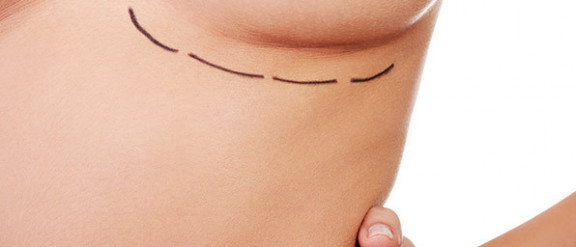
When it comes to breast surgery, implants immediately spring to mind – but it is not just about bigger cup sizes. Breast lift surgery improves the look of saggy and uneven breasts. It raises the breast tissue, repositions the nipple and areola while also enhancing breast shape. If the areolae are stretched with age, they can also be reduced in size. Breast lift surgery can also be offered to complement breast augmentation or breast reduction. Although popular among celebrities, few people understand the ins and outs of what it means to have a breast lift.
What causes my breasts to droop?
Breast can often lose their shape and tone with age, weight loss or childbirth. Breast tissues can start to sag and eventually the nipples face downwards or they may become uneven in appearance or breasts may shrink in size.
Will the procedure work with larger breasts?
Although not impossible to lift breasts that are large, the results may not be as long-lasting as a procedure carried out on smaller breasts. Heavier breasts usually work against surgical changes.
I am thinking of having children – can I still have a breast lift?
Postponing surgery is recommended if you are considering starting or adding to your family. The process of pregnancy and breastfeeding can stretch the breasts and reduce their volume, making it likely the full benefits of a breast lift will not be achieved. Waiting and avoiding any risks is the best option here.
A suitable candidate will have a positive outlook and general good health – as well as realistic expectations.
When is the best time to consider surgery while losing weight?
You should always talk to your surgeon if you are planning to lose weight. It may be that you will need to firstly get to your chosen target and stabilise your weight before undergoing surgery.
How can I prepare for this treatment?
It is important to do your research and make sure your chosen surgeon is qualified to be carrying out the procedure. A great way to do this is by taking a look at the special register on the General Medical Council website here – http://www.gmc-uk.org/doctors/... and checking the surgeon’s credentials. Should you choose to go ahead with the procedure, your surgeon should also give you detailed pre-operative instructions, answer any questions, take a comprehensive medical history and perform a physical exam to determine your fitness for surgery.
It is also important for smokers to quit smoking at least six weeks before the procedure, while alcohol should be limited and aspirin avoided. Hydration is vital, too, before and after surgery – so keep drinking water.
What do I need to do for a safe recovery?
Making sure you have somebody who will be there for you during your first week of recovery is one of the first and most important steps to a safe recovery. The after effects differ from patient to patient, but it is vital that each one has somebody on hand in the early days.
And be sure to have your kitchen cupboards filled with recovery-friendly and healthy food and drinks. High-protein, low-sodium foods are best. Fresh fruits and vegetables are also key.
Another top tip is to keep everything you will need to hand – your arms will have a limited range of motion, so make sure it is all at counter level and have clothes close to hand, opting for front buttoning garments.
And good news! You can finally get around to binge watching that Netflix series your friend recommended months ago. Or start to get through that huge pile of paperbacks you have on your bedside table. Recovery means you will have lots of time on your hands – so use it wisely!
Do I need to sleep in any specific position?
Sleeping on your back is recommended. Sleeping in an inclined position (25 to 45-degree angle) for the first few days after surgery and while swelling remains is also advisable.
When will I be able to properly appreciate my new look?
Inititally, you may lose sensation in the nipple and areola areas. Although it is usually temporary, be prepared for it to take some weeks to return. On some occassions, it can take more than a year although this is more rare.
Your breasts may also take time to assume a more natural shape. Scarring from the incisions will initially be red or pink and will take months following surgery to fade.
It is likely that you will suffer from some mild discomfort during this time – but this is nothing to be worried about. Severe pain, however, should be reported to your doctor.
Where can I find a list of all the information I need to know?
Consultation is an on-going process, so you can ask questions throughout the process. As a rough guide, it is important to ask about the expected outcomes, your suitability for the treatment, surgery preparation and risks and after care.
Alternatively, the General Medical Council’s patient leaflet is very useful and offers professional advice to anyone who is considering cosmetic surgery. Visit http://www.gmc-uk.org/guidance...
Related Treatments

Breast Implant Surgery
Breast implant surgery, otherwise known as a ‘boob...

Breast Lift Surgery
If you have found that your breasts have lost thei...
